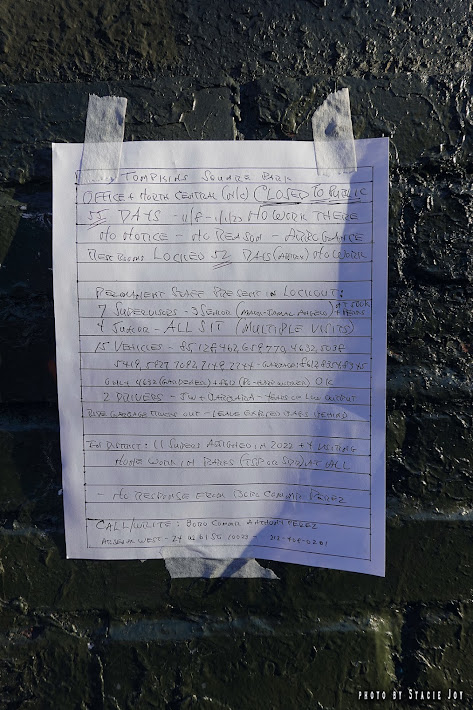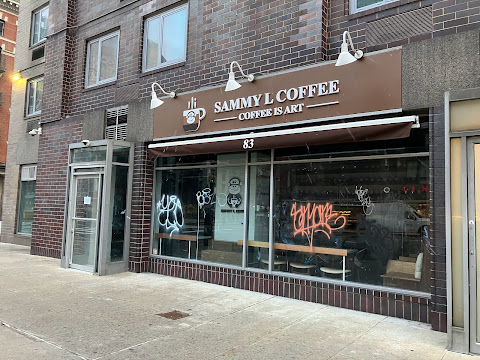"Twenty-nine years is a long time to sustain a run," "Stomp" co-producer and general manager Richard Frankel said. "Foreign tourists became a major part of our audience and they really have not returned to New York since COVID. It's been tough. We just aren't selling enough tickets."
The energetic percussion-based show opened here on Feb. 27, 1994, for an initial four-month run. Since then, I've walked by the theater between Seventh Street and St. Mark's Place thousands of times and never had any interest in seeing the production.
I'm not the biggest theater person, spending more time taking in live music, movies or art exhibits. Aside from seeing the marquee on a near-daily basis, "Stomp" didn't immediately register with me. At some point, I realized that "Stomp" had been playing here forever. I think it was 1997.
As the production continued to catch on and become a tourist destination, the desire to never see it only intensified.
I recall sitting with friends at the Grassroots on St. Mark's Place. Someone knew a cast member and went to see the show. Their reaction: "It was better than I expected." I heard that similar refrain from other people who had dreaded seeing it, mostly locals who brought relatives or other out-of-towners to the theater per their wishes.
Unlike "Rent," which had local roots, "Stomp" came out of the 1980s United Kingdom street performance scene. I never saw a connection between the show and the neighborhood, other than where the venue was located. Still, Frankel, the producer, told NPR that "Stomp" "really captured the sensibility of the East Village in the 1990s."
In any event, as it was ending after nearly 11,500 shows, I decided to buy a ticket for an evening performance last week... and found myself in a short line like I had passed so many times in the past 29 years.
I admit to being curious about what the interior looked like... (there's a strict no-photo policy in the auditorium) ...
Here's an official description of the plot via a press release about the closing:
It is a journey through sound, a celebration of the every day and a comic interplay of characters wordlessly communicating through dance and drum. Synchronized stiff-bristle brooms become a sweeping orchestra, eight Zippo lighters flip open and closed to create a fiery fugue; wooden poles thump and clack in a rhythmic explosion. "Stomp" uses everything but conventional percussion instruments — dustbins, shopping carts, radiator hoses, boots, hub caps — to fill the stage with a compelling and unique act that is often imitated but never duplicated.
On the night of the show, I found myself sitting next to, and in front of, several parents and their children — roughly 7 to 12 in age. The kids patiently waited for the show to begin (the 8 p.m. start was actually 8:15 p.m.) by playing games or watching videos on various handheld devices.
The show started, and the attendees — a sold-out theater of 300-plus — seemed to appreciate the talented performers and theatrics, laughing and clapping along during the audience-participation moments. The kids around me especially enjoyed the more sophomoric elements of the show (the radiator hose/penis gag). Set pieces came and went, and we all saw countless inventive ways to make rhythms from everyday household items.
I was pleased we had breezed through the show, as
the early 20th-century seats without much legroom were taking their toll on my legs and lower back. At one point, I figured I had about 15 minutes left of the 105-minute show (with no intermission). I glanced at my phone; I had been there for 35 minutes —
70 to go!
With the continued banging of trash can lids and swishing of brooms, I wondered who the characters were supposed to be: Co-workers not really working?
(A thunderous display of quiet quitting?) Roommates in an industrial space? (I would
hate to live below them with all this racket!)
In the end, I'm glad I saw it. I appreciated the creativity or, as
Village Preservation put it, "the joyful John Cage-ian insight that any object can be an instrument and any noise can be a song."
And there weren't any "why didn't I see this 26-27-28-29 years ago!" pangs of regret.
The show has won several awards, including the Olivier for best choreography, an OBIE and a Drama Desk award. Its North American and European tours will continue. (It has played in 45 countries.) So this isn't the end of "Stomp."
As for the future of the theater, I hope it remains an off-Broadway destination. In the 1980s, the Orpheum was well-known for Off-Broadway productions such as "Little Shop of Horrors" in 1982, Sandra Bernhard's "Without You I'm Nothing" in 1988, Eric Bogosian's "Sex, Drugs, Rock & Roll" in 1990, John Leguizamo's "Mambo Mouth" in 1991, and David Mamet's "Oleanna" in 1992.
No word on what might be next for the Orpheum, reportedly owned by Liberty Theatres, a subsidiary of Reading International, which also owns Minetta Lane Theatre. Some people have worried that this prime space will become the Orpheum Condoplex or something. That would be a familiar East Village story for the 2020s.



















































